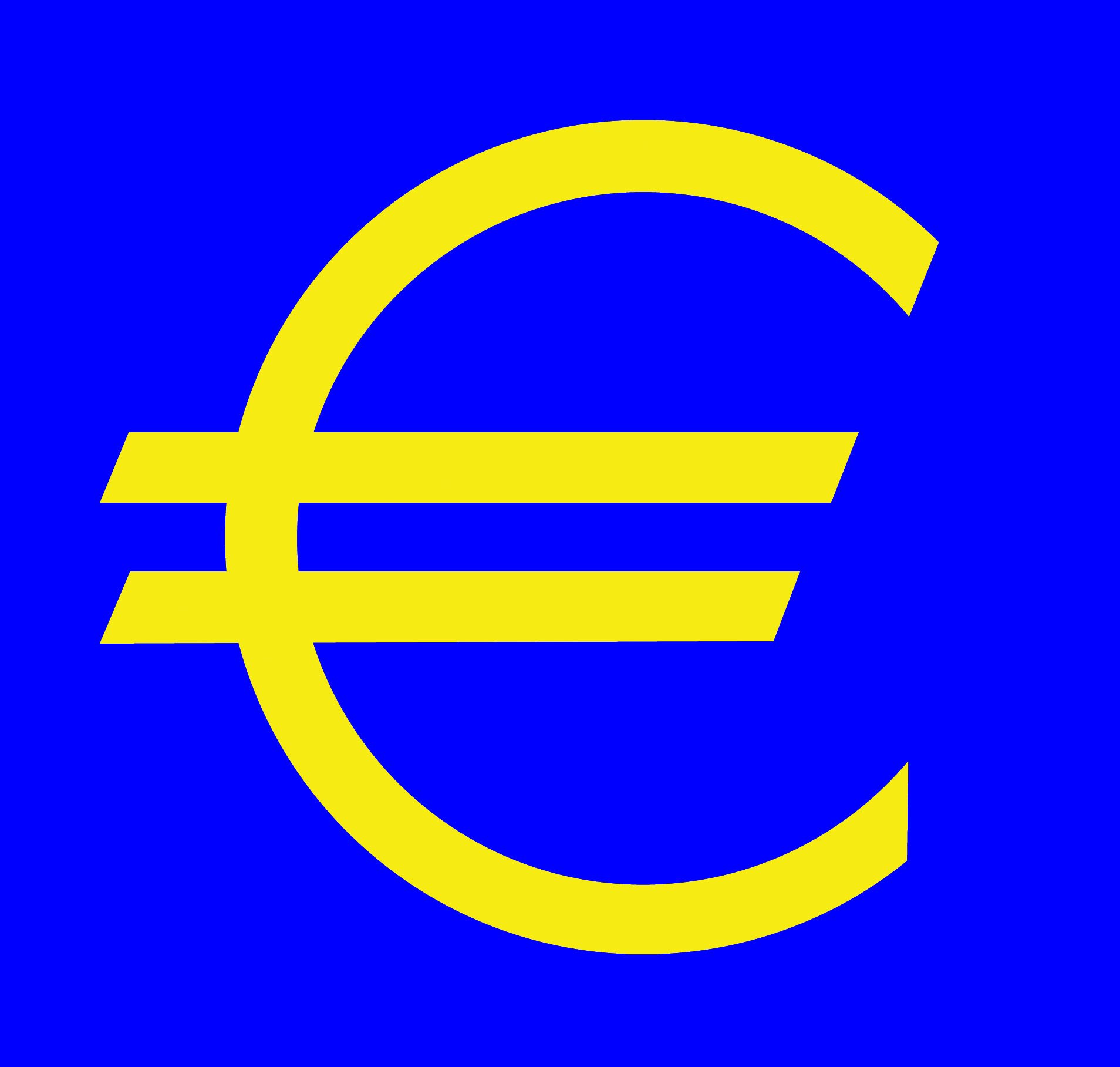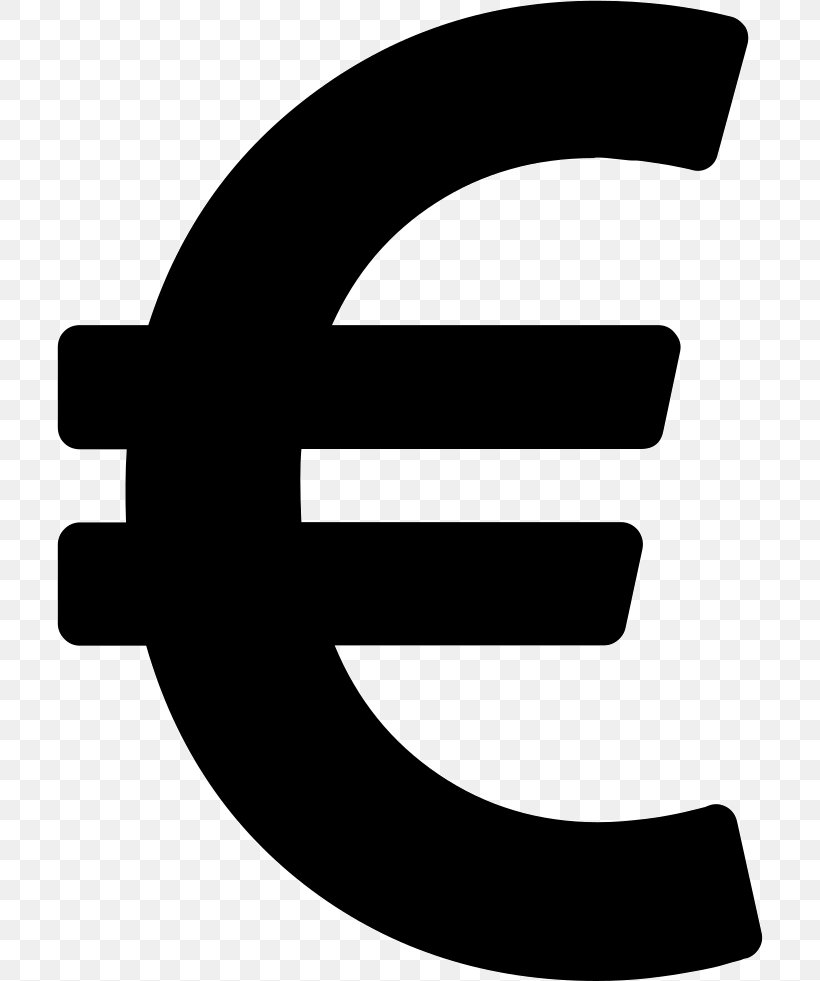What Is The Symbol For Euro? Unlocking The Mysteries Of The €
So, you're wondering what is the symbol for Euro? Well, buckle up, because we're diving deep into the world of currency symbols, and the Euro happens to be one of the most iconic ones out there. It's that fancy little "€" sign you see all over Europe. But what's the story behind it? How did it come to be? And why does it matter? Let's get started, shall we?
Now, before we dive into the nitty-gritty details, let me tell you why this matters. The Euro symbol isn't just a random design; it’s a representation of unity, strength, and modernity in the European Union. It’s not just about money—it’s about culture, history, and the future. So, if you're curious about the €, you're in the right place.
And hey, if you’re planning a trip to Europe or just want to impress your friends with some trivia, knowing the ins and outs of the Euro symbol can be a game-changer. Let’s explore everything you need to know about this fascinating little character. Ready? Let’s go!
Read also:Discover The Ultimate Fun With Masafun Your Gateway To Adventure
Table of Contents
- The History of the Euro Symbol
- Design and Meaning Behind the €
- How and Where to Use the Euro Symbol
- Typing the Euro Symbol on Your Keyboard
- The Euro Symbol in a Global Context
- Frequently Asked Questions About the Euro Symbol
- Comparing the Euro Symbol to Other Currency Symbols
- Why the Euro Symbol Matters
- The Future of the Euro Symbol
- Final Thoughts on the Euro Symbol
The History of the Euro Symbol
Alright, let’s rewind the clock and talk about how the Euro symbol came to be. Back in the day, before the € was even a thing, Europe had its own set of currencies. You had the Deutsche Mark, French Franc, Italian Lira, and so on. But then, in 1995, the European Commission decided it was time to unify the continent with a single currency. And with that, the Euro was born.
The Euro symbol, €, was officially unveiled in December 1996, after a long process of brainstorming and design. The idea was to create a symbol that would represent the strength and stability of the European Union. But here’s the kicker—it wasn’t just about aesthetics. The designers wanted something that would resonate with people across different cultures and languages.
How the Euro Symbol Was Chosen
Now, you might be wondering, who came up with this brilliant idea? Well, the Euro symbol was designed by a Belgian named Alain Billiet. But here’s the twist—it wasn’t just one person’s brainchild. The European Commission actually held a competition, and thousands of designs were submitted. After months of deliberation, they picked the one that stood out the most.
Here’s a fun fact: the winning design was inspired by the Greek letter epsilon (ϵ), which represents the first letter of the word "Europe." Plus, those two parallel lines running through the symbol? They’re meant to symbolize stability and reliability. Pretty cool, right?
Design and Meaning Behind the €
Let’s talk about the design of the Euro symbol. At first glance, it might just look like a fancy letter E with two lines through it. But trust me, there’s more to it than meets the eye. The € is a masterpiece of simplicity and elegance, and every detail has a purpose.
Breaking Down the Symbol
- The curved lines at the top and bottom resemble a wave, symbolizing the dynamism of the European economy.
- The two parallel lines running through the middle represent stability and security.
- The overall shape of the symbol is reminiscent of ancient Greek coins, paying homage to Europe’s rich history.
So, when you see the €, you’re not just looking at a currency symbol—you’re looking at a piece of art that tells a story. And that story is one of unity, progress, and prosperity.
Read also:John Stone Nashville Schedule Your Ultimate Guide To Live Performances And Events
How and Where to Use the Euro Symbol
Now that you know what the Euro symbol looks like and where it came from, let’s talk about how to use it. Whether you’re writing a check, sending a text, or designing a website, the € symbol is everywhere. But here’s the thing—there are some rules you need to follow to make sure you’re using it correctly.
Placement of the Euro Symbol
In most European countries, the € symbol comes before the number, like this: €100. But in some places, like Ireland, they prefer to write it the other way around: 100€. Confusing, right? Well, that’s just how it is. The important thing is to be consistent, especially if you’re writing for an international audience.
And hey, don’t forget to leave a space between the symbol and the number. So it’s € 100, not €100. Trust me, those little details matter.
Typing the Euro Symbol on Your Keyboard
Alright, let’s get practical. If you’re reading this, chances are you’re sitting in front of a keyboard right now. So, how do you type the Euro symbol? It’s actually pretty easy once you know the trick.
For Windows Users
On a Windows computer, you can type the € symbol by holding down the Alt key and typing 0128 on the numeric keypad. Easy peasy, right?
For Mac Users
Mac users have it even easier. All you have to do is press Shift + Option + 2, and voila! You’ve got yourself a € symbol.
And if you’re using a smartphone, just hold down the dollar sign ($) on your keyboard, and the € symbol should pop up as an option. Technology sure has come a long way, hasn’t it?
The Euro Symbol in a Global Context
Let’s zoom out for a second and look at the Euro symbol from a global perspective. The € isn’t just a European thing—it’s a worldwide phenomenon. People all over the globe recognize it, and it’s become a symbol of economic power and influence.
But here’s the thing: the Euro isn’t the only currency symbol out there. There’s the dollar ($), the pound (£), the yen (¥), and many others. So, what makes the € stand out? Well, for starters, it’s one of the few currency symbols that represents an entire continent. That’s a pretty big deal.
Comparing the Euro to Other Currencies
When you compare the € to other currency symbols, you’ll notice that it’s one of the most visually striking. The dollar sign, for example, is simple and straightforward, while the pound symbol has a more traditional, old-school feel. But the Euro? It’s modern, sleek, and full of personality.
Frequently Asked Questions About the Euro Symbol
Got questions? We’ve got answers. Here are some of the most common questions people ask about the Euro symbol.
Why Does the Euro Symbol Look the Way It Does?
Great question! As we mentioned earlier, the design of the € symbol was carefully thought out. It’s meant to represent the unity, stability, and dynamism of the European Union. Plus, it’s a nod to Europe’s rich cultural heritage.
Can I Use the Euro Symbol Anywhere?
Technically, yes. But if you’re using it in an official capacity, like on a website or in a contract, you’ll want to make sure you’re following the correct guidelines. And don’t forget to double-check your placement and spacing!
Is the Euro Symbol Protected by Copyright?
Nope! The € symbol is in the public domain, which means anyone can use it without worrying about legal issues. But that doesn’t mean you should go crazy with it—always use it responsibly.
Comparing the Euro Symbol to Other Currency Symbols
Let’s take a closer look at how the Euro symbol stacks up against its competitors. As we mentioned earlier, the € is one of the most visually appealing currency symbols out there. But what about the others?
The Dollar Sign ($)
The dollar sign is iconic, but it’s also kind of boring. It’s just a simple S with a line through it. No frills, no fancy curves. That’s not to say it’s not effective—it’s just different from the Euro symbol.
The Pound Symbol (£)
The pound symbol is a bit more interesting. It’s based on the letter L, which stands for libra in Latin. But it’s still not as dynamic as the €. Plus, it’s only used in the UK and a few other countries, whereas the Euro is used all over Europe.
Why the Euro Symbol Matters
At the end of the day, the Euro symbol is more than just a piece of typography. It’s a representation of everything the European Union stands for: unity, progress, and prosperity. Whether you’re a tourist, a businessperson, or just someone who’s curious about the world, the € is a symbol you need to know.
And let’s not forget the practical side of things. If you’re traveling in Europe, you’ll see the € everywhere—from ATMs to menus to billboards. Knowing how to use it correctly can save you a lot of headaches.
The Future of the Euro Symbol
So, what’s next for the Euro symbol? Well, as long as the European Union exists, the € is here to stay. But who knows? Maybe one day we’ll see new designs or variations of the symbol. After all, the world is always changing, and currency symbols are no exception.
One thing’s for sure, though: the Euro symbol will continue to be a powerful force in the global economy. And as more countries adopt the Euro, its influence will only grow.
Final Thoughts on the Euro Symbol
Well, there you have it—the story of the Euro symbol. From its humble beginnings in 1996 to its status as a global icon today, the € has come a long way. It’s not just a currency symbol—it’s a symbol of hope, unity, and progress.
So, the next time you see the €, take a moment to appreciate everything it represents. And if you’re ever in doubt about how to use it, just remember the rules we’ve covered here. And hey, if you’ve learned something new today, why not share this article with your friends? Knowledge is power, after all.
Thanks for reading, and don’t forget to leave a comment below if you have any questions or thoughts. Until next time, stay curious and keep learning!


